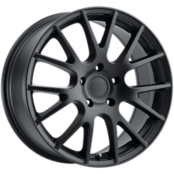Aftermarket wheels are the easiest (and maybe most fun) way to ramp up your ride. But deciding on the color and texture can really put a damper on your wheel shopping fun.
There are quite a few wheel options to choose from, too, so how do you know which one is best for you? Your wheel experts at America's Tire explain types of wheel finishes below to help you decide.
Don’t forget to consider your wheel construction, too!
TYPES OF WHEEL FINISHES
Wheels are made with a variety of different finishes, with each having its own advantages and disadvantages. Some options are more durable and corrosion-resistant while others are more vibrant, customizable, and color conscious.
POWDER COATED RIMS
Powder coated rims are some of the most popular options on modern wheels. Powder coating is a process where a powder coat is electro-statically held to the grounded parts of the wheel. Heat is applied to flow the powder together and cure it, resulting in a smooth and durable finish.
Powder coated rims have several advantages:
Durable and resistant to chemicals, chipping, scratching, and fading.
Corrosion and outdoor element resistance due to the smooth, unblemished layer.
Eco-friendly using a finishing process with fewer volatile organic compounds.
Powder coated wheels have a few disadvantages:
Thicker finish due to difficulty creating a thin layer of the powder.
Though the range is impressive, it is costly to customize your wheel color.
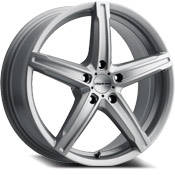
PAINTED WHEELS
Painted finish wheels are also very popular. They are airbrushed, allowing the manufacturer to create a variety of color options, textures, and styles. Satin, flat, matte, and gloss finishes are enticing options for a wheel shopper.
Advantages of painted wheels include:
Paint can be formulated to meet any color specification in a huge array of colors, types, and textures.
Painted finishes can even include bright metallic colors with aluminum flakes.
Disadvantages of painted wheels include:
Irregularities in color and texture can occur due to variations in spray equipment, line conditions, additions like mica or metallic flakes, and other processes.
Colors can shift and change depending on angle and distance from which the wheel is viewed.
Painted rims, including red, blue, black (and matte black), white, and gold wheels are increasingly available on the market to accommodate drivers with a customized look.
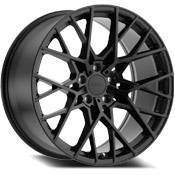
POLISHED WHEELS
Polished wheels are a raw aluminum wheel that has been buffed or polished to a mirror-like shine.
Some of their advantages include:
A true mirror-like shine that has no bluish tint or additional weight, unlike a chrome wheel.
Relatively less expensive compared to chrome.
Scratches and dings can be spot repaired for minimal cost.
On the other hand, some disadvantages of polished wheels include:
Prone to scratches and dings; take care while washing or buffing as even a single grain of sand can scuff them.
Constant upkeep due to the porous nature of aluminum, which is vulnerable to oxidation.
You can avoid oxidation of your polished wheels by waxing them after washing.
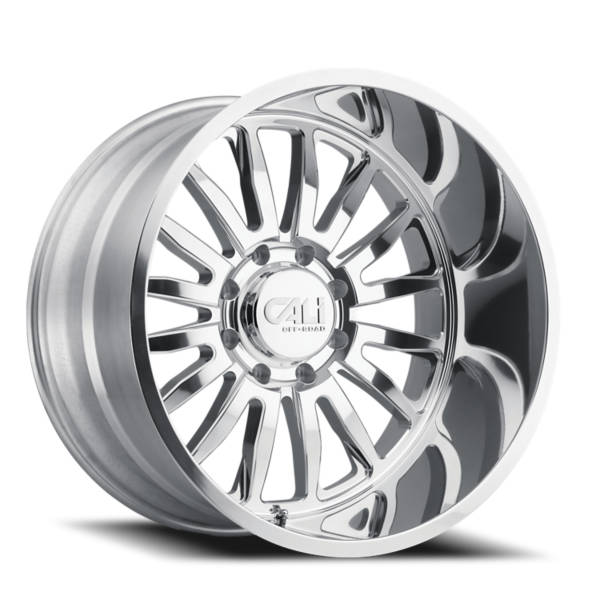
MIRROR MACHINED WHEELS
Mirror machined wheels are very similar to polished wheels as they are both aluminum rims polished to a bright shine. However, mirror machined wheels add an application of a clear coat finish on the bare aluminum to protect the rim and increase its durability.
Some advantages of mirror machined wheels include:
Brilliant shine with added protection via a clear coat.
Unique accents are achieved through paint or tint mix finishes.
Lightweight alternative to chrome.
One notable disadvantage to mirror machined wheels is that a new clear coat is required when the wheel is scratched or dented.

CHROME WHEELS
Chrome wheels are finished by adding layers of copper, nickel, and chrome to the wheel, usually made of a base metal like aluminum or steel. These layers create a mirror-like finish and very sturdy structure.
Chrome wheels have a number of advantages, including:
A true mirror finish with distinctive shine and unique bluish tint.
Yields a tough and scratch/ding resistant exterior.
Easy maintenance that includes washing and polishing without fear of scratches.
Chrome wheels do include some disadvantages as well, such as:
Typically more expensive than other finish types.
Damage cannot be spot repaired; the whole wheel must be stripped and re-chromed.
Chrome plating results in a thicker finish, potentially causing fitment issues due to tight tolerances between the wheel and brakes.
Chrome layers add weight and impacts performance.
Chrome can be permeated by moisture and result in corrosion, preventing a proper seal between your tire and your wheel.
Winter weather and salt can cause chrome wheels to peel.
If unsprung weight, maintenance, or inclement weather are issues for you, chrome is not the best finish for your wheels.
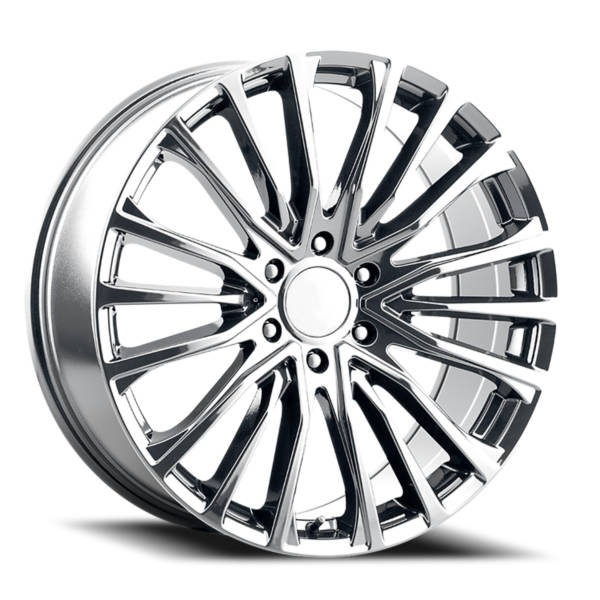
MACHINED WHEELS
Machined wheels are made by removing a thin surface layer while spinning to expose the shiny and smooth surface below. To protect against corrosion, a clear sealant coat is applied. You can find plenty of “naked” machined wheels that feature no other coloring but many utilize a contrast with black paint. This style is becoming a popular option for original equipment wheels.
SHOP MACHINED WHEELSMachined wheels have several advantages:
Precision machinery results in a consistent, flawless surface.
Unique styling and patterns are distinctive from other options.
Lightweight strength is great for many applications.
Widely available in tons of fitments due to popularity.
Some disadvantages of machined wheels to keep in mind:
May have visible lines (depending on process)
Easily show specks of dirt and dust
Can be costly to repair as they require specialized tools and machinery
Premium raw materials and manufacturing result in higher purchase price
Luckily, machined wheels are easy to clean and increasingly available by wheel manufacturers, so you’ll have plenty of customized choices. And when you shop with us, you know you're getting the best price possible.
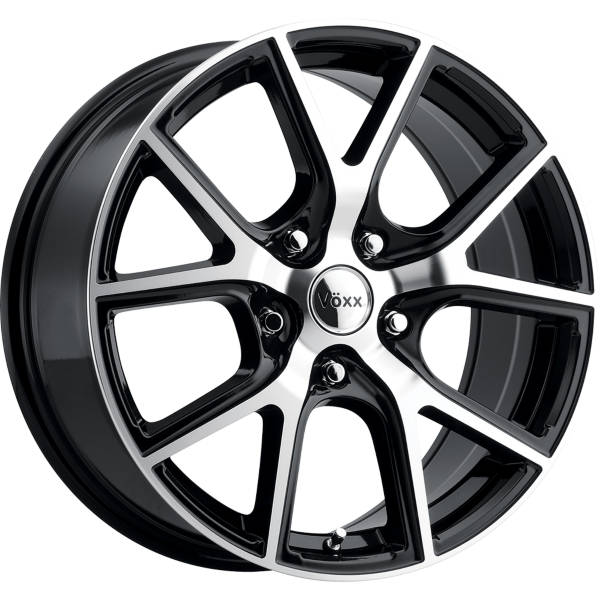
Ready to roll?
With so many options, it pays to know a little more about wheel finishes to help you choose the wheel that suits your style and practical needs. Keep in mind that regular maintenance plays a big role in keeping your wheels like new. Make sure to choose rims that fit your maintenance schedule.
Check out our page on how to clean your wheels here!
Also, if you live in a winter region, you should consider a set of winter wheels to keep your warm weather set as pristine as possible!
If you’re still not sure what wheels make the most sense for you, we’re ready to help. Walk-ins are always welcome but we encourage you to buy and make your appointment online first. Customers who buy and book online wait less time in-store!

